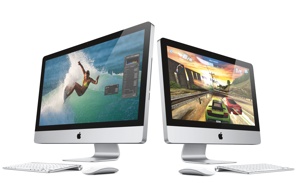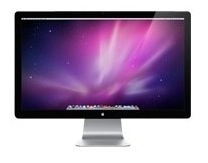This year, ultrabooks, utrathins, and tablets in the mobile segment are getting all the limelight. However, IHS iSuppli (http://www.isuppli.com) says the All-in-One (AiO) computer, such as the iMac, may “save” the desktop segment of the computer market.
Shipments of AiO’s are forecast to reach 16.4 million units this year, up a robust 20 % from 13.7 million units last year, according to the research group. In comparison, worldwide growth of traditional desktop shipments in 2012 will amount to a dismal 0.2% — rising from approximately 132.0 million units to 132.3 million units, notes iHS iSuppli.
The healthy pace of growth for AiO’s will continue in the years to come, the research group predicts. By 2016, shipments will hit an estimated 24.8 million units, equivalent to a five-year compound annual growth rate of nearly 13%. The fast-growing AiO space may, in fact, save the overall desktop segment — already battered by competing consumer devices, like smartphones, media tablets and even mobile computers such as laptops and ultrabooks — from going into further decline, IHS iSuppli believes.
Unlike traditional desktops that comprise a separate monitor, system base unit and power cable, all-in-ones utilize a different form factor — one that integrates the display and base unit into a common chassis, with the power cable permanently attached to the entire mechanism. AiO examples on the market today include the iMac range of products from Apple, as well as the TouchSmart series of PCs from Hewlett-Packard Co.
“The AiO PC is especially appealing to consumers that have been waiting for a desktop-monitor combo that not only combines the strengths of a traditional desktop system but also offers a few more extras typical of the new versatile devices, such as a flexible form factor, a large screen size and touchscreen optical technology,” says Craig Stice, senior principal analyst for compute platforms at IHS.
For instance, AiOs no longer need to be bound to a computer desk but can fit into a variety of environments — including on a wall, from where the devices can be hung — bringing about new user experiences in the process. Some models also offer a TV tuner option that allows the computer to function as both a personal computer and a television. Which is something I’d love to see in an iMac.
Often AiO’s also come with larger screen sizes, with 22-inch screens being the average. Many larger systems offer high-definition (HD) specifications, including HDMI inputs and outputs, options for 3-D, and high-end sound systems. Again, things I’d like to see in an iMac.
Most AiO systems also employ optical technology with sensors within raised bezel edges that will track touch in a typically two-touch or point-and-touch screen.
Pricing for AiO systems is now comparable to standard desktops — anywhere from less than US$500 for a modestly packed system with a 20-inch screen, up to nearly $2,000 for a fully loaded high-end system, notes iHS iSuppli.
Still, AIO systems have their drawbacks, says the research group. The computer can’t be customized with additional or upgraded hardware as easily because of the more enclosed environment and space constraints within the system, and the all-in-one form factor that makes them unique also makes the machines hard to repair. As a result, their product life cycle is shorter than that of the traditional desktop, and the total cost of ownership also comes out higher.
Apple was No. 1 last year in AiO shipments, with 28% share of the market, followed by Lenovo, Dell, HP and Sony. Expect that to continue.
— Dennis Sellers




